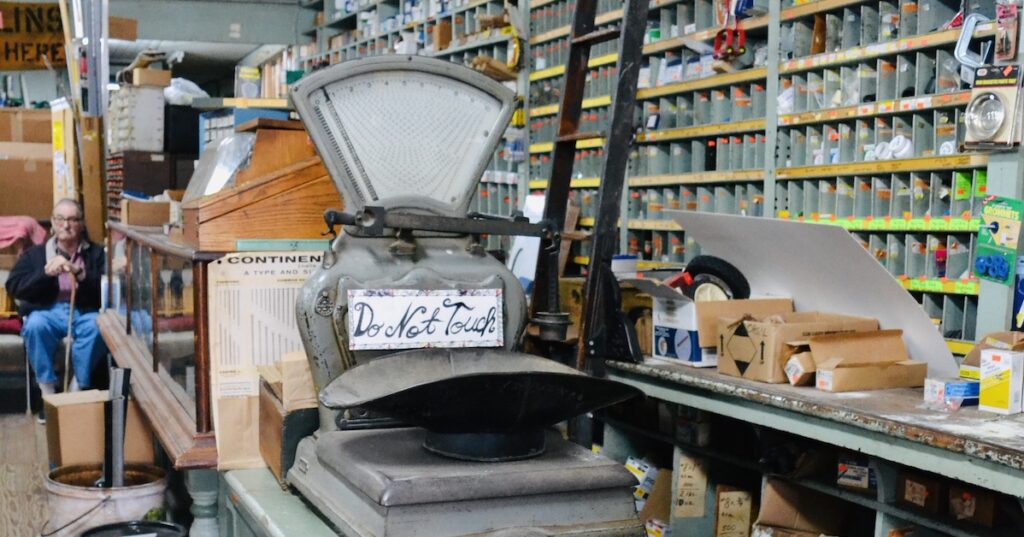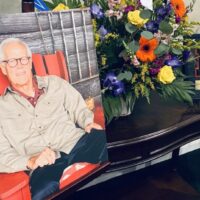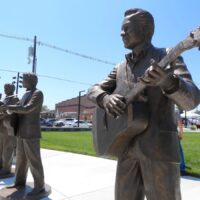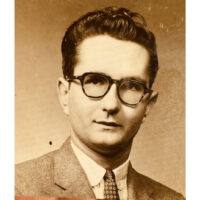When Mac Arthur died Monday morning at the age of 88, a whole big world of knowledge passed with him.
A former music educator and high school principal, he spent the last 50 years of his life as a small business owner in downtown Hopkinsville. Most of that time was devoted to running Young Hardware with his wife Catherine on Sixth Street. They bought the hardware store in 1974, and over time Mac became the kind of proprietor that customers relied upon for all kinds of advice.

What kind of nails to use for a certain project.
How to keep pests out of the garden.
When to plant tomatoes.
Where to notch the holes in a horse’s leather halter.
Mac offered a kind of expertise that’s hard to find in a big box store today. Online? No way.
Mac cut glass, screens and rope to order. He matched paint colors. He made keys. He told customers how to save a rusty cast iron skillet even though he had plenty of new ones to sell.
My friend Taylor Hayes occasionally presented problems that needed an answer. When he went to the hardware store and asked what to do about an old skillet, Mac told him to slice up potatoes and let the juice go after the rust. It took a while, but it worked.
I had known Mac since I was 12 years old, which was about the time he took over the hardware store. Back then he sold a lot of horse tack, so I was a regular at Young Hardware for several years.
Later as a newspaper reporter, I was shopping for something different. Stories. Mac and Catherine became trusted sources. Occasionally the story was about them. Other times it was about something happening downtown. A business closing. A new one opening. Someone moving back to town.
Describing what made his store an institution in Hopkinsville, Mac once told me, “People who have to have a so-and-so come here because we have so-and-so.”
The so-and-so might have been a couple of odd-sized screws that Mac or Catherine retrieved by climbing one of the tall ladders on wheels that provided access to dozens of cubbyholes that ran the length of both sides of the building. Or maybe it was a hog scraper, a tool that only a few humans living today know is used to remove hair from a scalded pig that’s about to be butchered. He sold those, too.
I once spent the better part of a beautiful snowy day with Mac and Catherine and watched them sell out of snow sleds and shovels.
Sometimes, though, I wondered how many people who walked into the hardware then left without buying anything. Many of them came to talk to Mac. In his own, understated way, the man could hold court with the best of them.
Mac saw potential along the block of Sixth Street between Main and Virginia streets. He and Catherine began buying more century-old buildings on the street.
Although the retail heart of Hopkinsville had once thrived around Ninth and Main streets, Mac made a case for Sixth Street. He stuck with it. He rehabbed buildings. He searched for tenants. He encouraged new business owners.
One day Mac took me for a tour of one of his newly renovated buildings and said, “I need someone with some guts who wants to go into business.”
Yes, he could be blunt.
Eventually, he convinced allies in city government of the potential — and a $330,000 federal grant was secured through Hopkinsville’s Downtown Renaissance Program. It paid for a new streetscape, sidewalks, decorative lighting and other improvements. And the city switched the direction of one-way traffic on Sixth Street so motorists would have a view of the historic courthouse and the Alhambra Theatre as the dominate backdrop.
Sixth Street became the “epitome of a private-public partnership,” Downtown Renaissance Director Holly Boggess described.
Today we know Sixth Street as one of Hopkinsville’s most picturesque spots. The former hardware building is now The Mixer restaurant. Downtown developer Hal McCoy owns the building, and Graham and Heather Dawson own the restaurant. The Dawsons also operate the adjacent business, Baked Hopkinsville.
I don’t believe any of this re-making of Sixth Street would have happened without Mac Arthur.
It’s an important lesson. One person, steadfast and willing to work toward a goal for decades, can have a huge impact on their community. Mac did that.
Jennifer P. Brown is co-founder, publisher and editor of Hoptown Chronicle. You can reach her at editor@hoptownchronicle.org. She spent 30 years as a reporter and editor at the Kentucky New Era. She is a co-chair of the national advisory board to the Institute for Rural Journalism and Community Issues, governing board president for the Kentucky Historical Society, and co-founder of the Kentucky Open Government Coalition.





